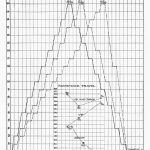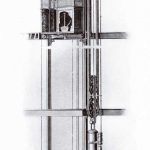The consulting engineer was a prolific author and noted amateur historian.
In addition to his work as a consulting engineer (ELEVATOR WORLD, April and May 2017), Reginald Bolton pursued two other careers: he was a prolific and well-known author of technical books and articles, and he was an equally well-known amateur historian and archaeologist. (His specialty was the Colonial and Native American history of Manhattan, New York, and its surrounding region.) In the latter role, he produced more than 20 books and articles. Bolton also wrote seven books that addressed a variety of technical topics (including elevator service), and he authored more than 40 technical articles, eight of which addressed elevators and one that concerned escalators. He also frequently attended presentations at meetings of the American Society of Civil Engineers (ASCE) and the American Society of Mechanical Engineers (ASME), and his comments on numerous papers were often included in the societies’ published transactions. His writings on elevators shed light on elevator operation, technology and service.
Bolton believed that decisions about the elevator system and type of service required for a given building should not be left to architects or manufacturers. The former were deemed to lack the required technical understanding of the problem and were described as “practical in their own proper element” and as “amateurs in this other field.”[1] He also claimed: “nor are such problems to be properly settled upon the advice of manufacturers of the apparatus involved, whose information, wide though it may be, is not of that independent character necessary for unbiased decision on such a subject.”[1] His assessment of the impact of improper analysis has a contemporary tone:
“Serious blunders have been made, and great damage has been done to the future value of such properties by assumptions and errors in the locating and proportioning of elevators, and it will probably be only a few years before very radical changes will require to be made in some of the noted tall buildings if they are to retain their rentable values.”[1]
Bolton implied that independent consulting engineers (such as himself) should take the lead in making these critical decisions. He also noted the increasing appearance of new data on building use, occupancy patterns and car operation, which could be used to inform traffic analysis and elevator selection.
In 1902, Bolton observed that “no comprehensive information has yet been published on the subject” of elevator traffic analysis.[1] In 1908, he offered a response to this unmet need in a book with a rather lengthy, but descriptive, title: Elevator Service: Operating Conditions and Proportions, With Diagrams, Formulas, and Tables for Passenger Travel, Schedule and Express Operation, With the Relation of the Elevators to the Building, and Proportions and Loads of Cars. Although his other books were produced by commercial publishers, he chose to self-publish Elevator Service. The reasons behind this decision are unknown. Given his success as an author, it is unlikely that he would have had difficulty attracting the attention of a publisher.
Bolton’s book on elevator traffic analysis marked the first attempt to provide a detailed explanation and method for determining a given building’s elevator requirements. The book’s chapter titles reveal his attempt at a systematic investigation of the problem: “The Problem of Vertical Transportation,” “Operating Conditions,” “Passengers and Operators,” “Rating the Work of the Elevator,” “Computing the Average Work,” “Express Service,” “The Shape and Size of the Car,” “Load and Speed Combinations,” and “The Building and Its Proportionate Service.” He also devised numerous formulas and charts that accompanied his written explanations (Figure 1). (A detailed introduction to this important work is found in From Ascending Rooms to Express Elevators: A History of the Passenger Elevator in the 19th Century, Elevator World, Inc., 2002.)
It was common practice in the 19th and early 20th century for architects to design elevator shaft and car doors and gates. Bolton highlighted the consequences of doors predicated on “architectural design, or some conformity with interior decorations” with a specific example:
“It is certainly an absurdity to provide doors, as was the case in the Manhattan Life Building, so heavy that no man could be found strong enough to operate them, and then to [have to] provide machinery to do the work.”[2]
In fact, Bolton credited the “excessive weight of doors” with the development of automatic opening and closing devices. Although he appears to have appreciated their ingenuity, he observed that while they were “very effective in relieving the operator of much muscular work,” he felt that they also “introduced an additional complication of mechanical appliances.”[2]
The presence of a specific safety feature — automatic stops at the top and bottom of the shaft to guard against overruns — was also, somewhat paradoxically, linked to dangerous operator behaviors:
“This feature leads to a remark upon another reckless habit of many car operators — that of neglecting to use their control levers at the end of the runs, depending upon the automatic [stops] at top and bottom. The practice is a growing one and is fraught with danger, especially on the down-runs, and to plunger machines, on the up-runs. Operators have been observed frequently to start an express car down and then entirely let go of the control lever. The best automatic cutoff device is subject to possible disarrangement, by the sliding of stops, jumping of rope, or other slight mishap, and operators should be disciplined into the proper use of the control at both end landings.”[2]
Bolton also recognized that the role of elevator operators in providing satisfactory elevator service was both critical and unpredictable:
“There still remains the uncertain and often unsatisfactory element of the personality of the car operator, who is only rarely made cognizant of the bearing, which his promptitude, attention and care in avoiding over-running of landings has upon the cost of operation. Where these employees have been placed, as they should be, under the orders and directions of the operating engineer, remarkable improvements have resulted, particularly in the operation of electric elevators, in some of which the controls are of so small and delicate a character that operators get into habits of continually fidgeting with the little levers.”[3]
He did, however, recognize that elevator operators had a difficult job: “Standing, as they do, for hours, frequently engaged continuously in the severe muscular exercise of opening and shutting the absurdly heavy gates with which architects continue to burden the service, it is not to be wondered at that they become careless or surly.”[1] To solve this problem, he advocated for regulation of operator working hours to ensure the highest level of safety and service.
The operators were, of course, only one of the human aspects of the problem of vertical transportation. Bolton was equally critical — and complimentary — of passengers. He offered a rather harsh assessment of passenger behavior in an article that compared efficient elevator and train service:
“As in surface transportation, it is not the alert and active passengers, but the slow and stupid ones who bring about the delays, aggravated in both forms of transit by ill-designed means for admitting of the passage of these persons to and from the vehicle. As one obstructive person can delay the movement of a train from a station, and thereby hinder all trains following on the same track, so the actions of one person in one elevator will affect the operation of others running on a ‘schedule,’ notwithstanding the fact that each elevator possesses its own independent line of travel.”[4]
He offered a more charitable assessment in the context of passengers having to learn new elevator signaling systems. Throughout much of the 19th century, waiting passengers literally called an elevator by shouting “up” or “down” into the shaft to alert the operator. The development of signaling systems (which included hall call buttons, hallway direction indicators and interior car signal lights) and their continued development and constant changes in appearance and operation, meant that most passengers were on an almost constant learning curve. Bolton recognized this fact when he stated that:
“The traveling public have undergone some education in this matter, and have learned to enter and leave cars promptly, to understand the necessity for signaling, and for notifying the operator in advance of their destination.”[1]
In addition to providing insights on the operation of elevators, Bolton’s articles also included a variety of technical details. In a presentation to the Institution of Civil Engineers of Great Britain titled “High Office Buildings of New York,” Bolton described the operation of multiplying-sheave vertical and horizontal hydraulic elevators. He noted the marketplace dominance of vertical machines and described their operation as follows:
“Hydraulic power is employed to operate the elevators in the majority of these buildings, and the operating gear is practically of one form in all, viz., multiplying sheaves worked by a vertical hydraulic cylinder which pulls them apart. . . . Five or six ropes are used, each capable of full duty at the maximum load. Counterweight ropes are usually of the same size, and counterweights are of cast iron fitted in a sliding frame running on planed iron guides.”[5]
The typical image used to represent vertical hydraulic elevators was produced by Otis in the early 1890s (Figure 2). Bolton provided his British audience with an elevation drawing of the elevators in the Bowling Green Building, which depicted the two-story basement levels and the 16 above-grade floors (Figure 3). This image, drawn by Bolton, was one of 23 original drawings produced for “High Office Buildings of New York” and effectively illustrates the height of American skyscrapers and the overall installation.
Bolton’s personal investment in his career was also evident in his membership in seven different professional organizations. He was a member of two British organizations: the Society of Civil and Mechanical Engineers (Westminster) and the Institution of Civil Engineers of Great Britain, and he belonged to five American professional organizations: ASCE, ASME, the American Society of Heating and Ventilating Engineers, the American Society of Naval Engineers and the New York Electrical Society. Bolton also served as President of the Society of Civil and Mechanical Engineers (Westminster) and the American Society of Heating and Ventilating Engineers. In addition to his membership in engineering societies, his work as an amateur historian led him to membership in the New York Historical Society, the Municipal Art Society of New York, the American Folklore Society, and the American Scenic and Historic Preservation Society.
One of the many challenges a biographer faces is the desire to glean a sense of the subject’s personality. While this three-part biography presents the complex and prolific careers of Reginald Pelham Bolton, it perhaps only hints at the character of the man himself. One indication of this elusive biographical quality may be found in a short book Bolton wrote and published in 1904. The book’s full (and quite wonderful) title is: The Autobiography of an Irish Terrier: A Portrayal of the Problems of Existence as Seen From a Dog’s Point of View. His Hopes and Harassments, Loves and Likings, Delights and Delinquencies. Bolton described his “role” as the book’s author in an intriguing way, writing that the autobiography was “edited by a sorrowing friend.” A contemporary reviewer reported that Bolton displayed a “rare understanding” of dogs, that there was “humor in abundance on every page” and that the book’s subject, “Timothy Mulligan, the terrier, is a unique creation in modern fiction.”[6] As the old adage says: “You can tell a lot about a man by the way he treats his dog.” This also may be true of how he wrote about one.
- Figure 1: Reginald Pelham Bolton, typical chart, Elevator Service (1908).
- Figure 2: Otis vertical hydraulic elevator
- Figure 3: Partial elevation of vertical hydraulic elevator system in the Bowling Green Building, New York City, 1895-1898, drawn by Bolton
References
[1] “Elevators for Tall Office Buildings: The Problem of Efficient Service,” Cassier’s Magazine, Vol. 21, January 1902.
[2] “Defective and Dangerous Features in Elevator Operation,” The Engineering Magazine, Vol. 32, February 1907.
[3] “The Power Plant of Tall Office Buildings,” Transactions of the American Society of Mechanical Engineers, Vol. 25: 1904.
[4] “The Operation of Passenger Elevators,” Transactions of the American Society of Civil Engineers, Vol. 64: 1909.
[5] “High Office Buildings of New York,” Minutes of Proceedings of the Institution of Civil Engineers With Other Selected and Abstracted Papers, Vol. 143, London: 1901.
[6] “New Publications,” The Washington Post, September 25, 1905.
Get more of Elevator World. Sign up for our free e-newsletter.











